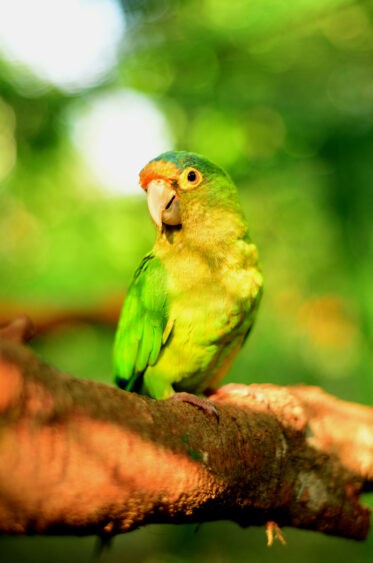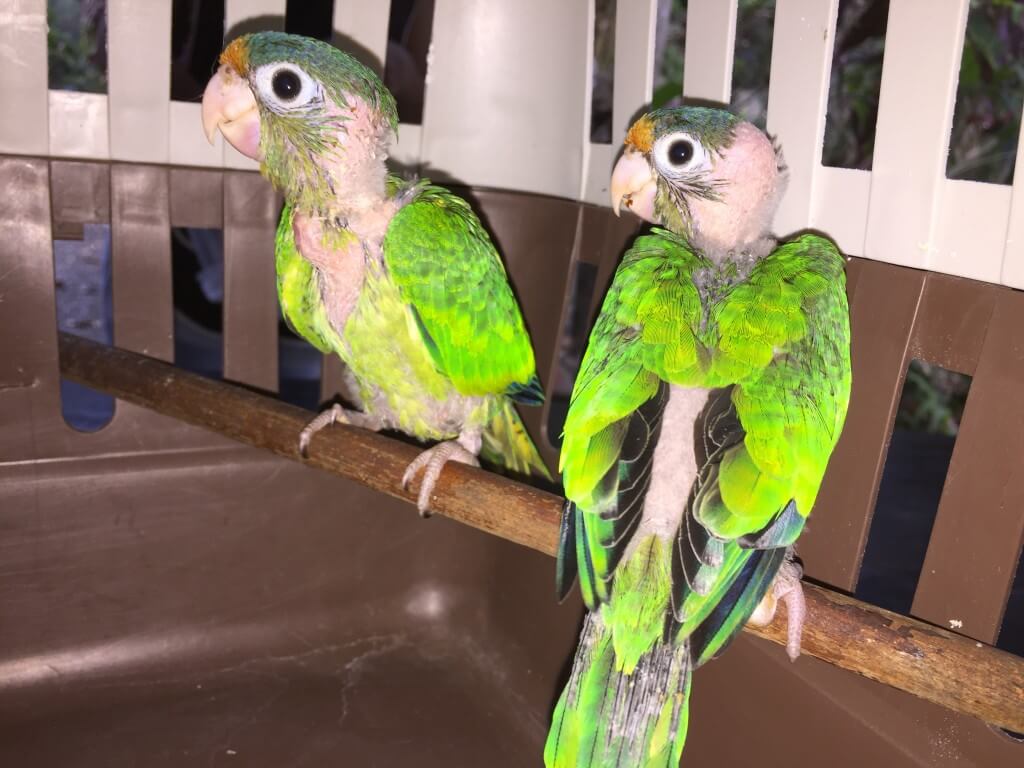Orange fronted parakeet
El perico catano
Common name: Orange-fronted Parakeet.
Family: Psittacidae.
Species: Eupsittula canicularis.
Distribution: From southern Mexico to northwestern Costa Rica. It inhabits dry tropical forests, savannas, mangroves, and disturbed areas, where it finds food and nesting cavities.

Introduction
The Orange-fronted Parakeet, with its distinctive orange forehead, is one of the most iconic birds of the dry forests of Mesoamerica. Its boisterous call and tendency to gather in flocks make it a symbol of the region’s wildlife. However, it faces serious threats due to habitat loss and illegal wildlife trafficking.
The Messenger of the Dry Forest
This species plays a crucial role as a seed disperser. By feeding on fruits and grains, it contributes to the natural regeneration of the forest. Its presence is an indicator of the health status of the ecosystems where it lives, especially in dry tropical forests, one of the most threatened habitats in Central America.
Ecological Role
- Seed Dispersal: Essential for Ecosystem Regeneration.
- Social Behavior: Its flocks fulfill social and ecological functions by moving seeds and connecting patches of forest.
- Natural Prey: part of the diet of birds of prey and carnivorous mammals, integrating it into the balance of the food chain.
Characteristics
- Appearance: bright green plumage with a distinctive blue forehead and a white eye ring.
- Size: measures between 22 and 24 cm in length.
- Diet: feeds on seeds, fruits, flowers, and tender shoots.
- Reproduction: nests in tree cavities. The female lays between 3 and 5 eggs, which are incubated for about 26 days. The chicks stay in the nest for several weeks before flying and joining the flock.
History of the Blue-fronted Parrot in Natuwa
The blue-fronted parrots that inhabit Natuwa come from seizures made by SINAC. Many of them were taken from the wild to be sold as illegal pets.

After years of captivity in small cages and unsuitable diets, they arrive at the sanctuary weakened and with altered behaviors.
In Natuwa, they find a safe home with spacious and natural enclosures that promote socialization with other individuals of the same species. Some, due to their imprinting with humans, cannot be released; however, here they are given the opportunity to live with well-being and dignity.
Enrichment and Well-being in the Sanctuary
To stimulate their natural behaviors, blue-fronted parrots participate in environmental enrichment programs that include:
- Fresh branches with seeds and flowers for foraging.
- Flight spaces that encourage flock interaction.
- Natural toys and climbing structures.
These activities not only improve their quality of life but also allow visitors to learn about the importance of respecting birds in their natural environment.
Conclusion
The blue-fronted parrot is an emblem of the dry forests of Mesoamerica and an example of how human pressure can jeopardize entire species. Protecting them is vital for conserving biodiversity and ensuring the regeneration of ecosystems.
At Natuwa, we work every day to give them a second chance and educate society about the importance of keeping these birds free, away from illegal trade. Please do not buy them!